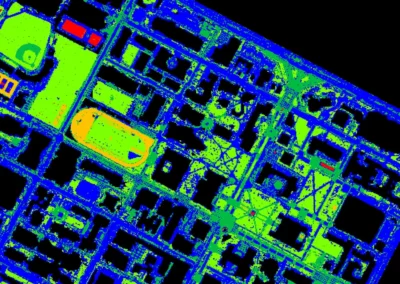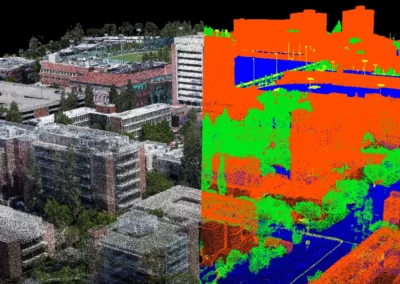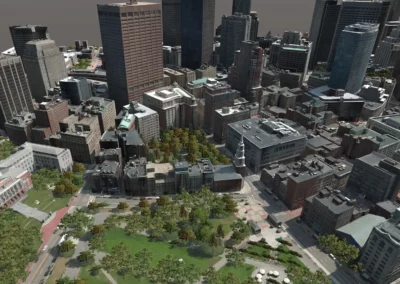Geospatial Terrain Research
Research Lead: Andrew Feng
The Geospatial Terrain team focuses on constructing high-resolution 3D geospatial databases for use in next-generation simulations and virtual environments. Utilizing both the commercial photogrammetric solution and our in-house R&D processing pipeline, the 3D terrain is procedurally recreated using drone platforms and electro-optical (EO) sensors.
The Geospatial Terrain team focuses on research and development to create the high resolution terrain reconstructions and corresponding run-time terrain simulation capabilities for Military users. The end-to-end pipeline streamlines the data capture, 3D processing, and semantic segmentation to produce simulation-ready high-resolution terrain. Our current research includes neural 3D terrain reconstructions for large scale environments and semantic terrain segmentations that utilize zero-shot AI models to extract object information for building aperture.
To date, ICT has produced 3D terrains through the unmanned aerial vehicle (UAV) collections of over a hundred different sites to support the terrain research efforts for US Army STTC. Our technology is also an integral part of Army’s One World Server (OWS) system, which utilizes our semantic terrain processing algorithms for creating and processing simulation-ready high-resolution 3D terrain from low-altitude UAV collections. We have developed terrain simulation applications including line-of-sight analysis, path finding, real-time terrain effects, concealment analysis, and so on. We are also actively developing new technologies to improve the terrain generation process. Our recent research focus will investigate neural-based methods for terrain reconstructions and zero-shot models for 3D segmentations.
For future research, we aim to address the current limitation of the photogrammetry process for creating 3D terrains. Specifically, we plan to develop the capability for photorealistic reconstruction and visualization of the geospatial terrain using neural rendering techniques.



